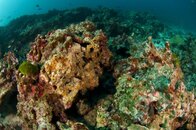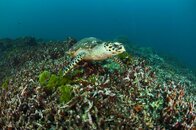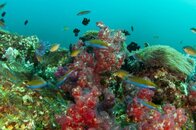Koh Bon and Koh Tachai have been incorporated into the Similan Islands National Park, so while they're not actually among the eponymous "nine" (plus some rocks) islands, you still need to pay Similans park fees to dive there. And yes, iamafish is correct that Richelieu Rock is not part of the Similans; it is contained within the Surin Islands National Park. Nevertheless, popular usage for dive travel discussions tends to lump the two together into one "Similans area" sort of category. As it happens, large shallow coral gardens of the Surin park were also affected by the coral bleaching episode, and therefore any discussion of conditions would logically include dive sites technically within and without the Similans park.
Fully agree with Quero regarding the inclusion of the site into the 'Similan discussion'.
Unfortunately the coral is in real bad shape and not because of bleaching, the state of the coral is from a different source. Koh Tachai reef is a prime sample.Over 90% of the coral is dead there and not since last years coral bleaching. Very sad to see.
The Surin islands also have plenty of dead coral, similar to Koh Tachai, not from coral bleaching.
The 'boulder' dives are still good, since there's hardly any coral there, it's the shallower dives that will show the dead coral.
On the other hand, Richelieu Rock seems to be as healthy as can be.






